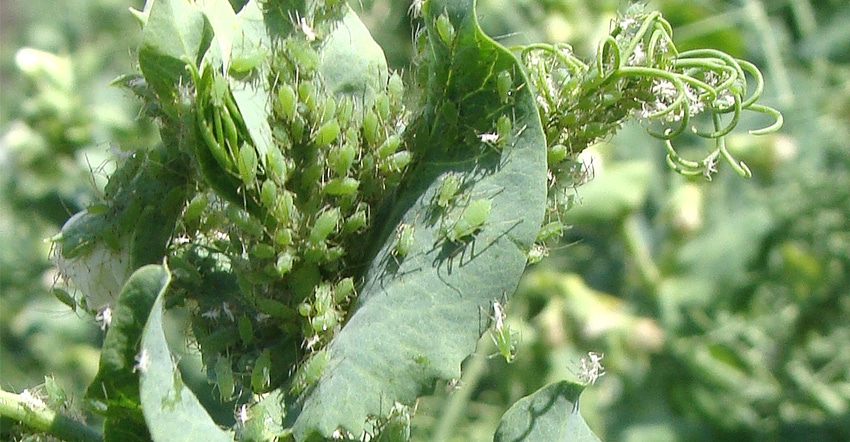April 19, 2018

There a new tool to help identify insect pests that attack chickpeas, field peas and lentils in the major pulse-growing areas of the U.S.
The new "Pulse Crop Insect Diagnostic Series" publication summarizes insect pests in North Dakota, South Dakota and Montana, as well as parts of Idaho, Oregon and Washington.
The series was a collaborative effort by North Dakota State University, University of Idaho, South Dakota State University and Montana State University. The guide was published by the NDSU Extension Service.
"The series features integrated pest management tools for managing major insect pests of pulse crops," says Jan Knodel, NDSU Extension entomologist. "Sections of the series include pest identification, crop damage, monitoring or scouting tips, economic threshold, cultural control, host plant resistance, biological control and chemical control."
The insect pests covered in the series are: wireworms, cutworms, pea leaf weevils, grasshoppers, Lygus bugs, pea weevils and pea aphids.
Some of the beneficial organisms that attack these insect pests of pulse crops also are addressed.
"The voracious lady beetle adults and larvae that consume about 50 to 300 aphids per day are an example of beneficial organisms," Knodel says. "Other effective predators covered are lacewings or aphid lions, minute private bugs, and Syrphid flies or hoverflies. The series also includes information about tiny parasitic wasps called parasitoids that lay eggs inside the body of aphids, and as larvae hatch from the eggs, they eat the aphid from the inside out, killing it."
The "Pulse Crop Insect Diagnostic Series" is available online at bit.ly/PulseCropInsectSeries.
Source: NDSU Extension
You May Also Like




